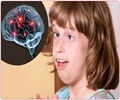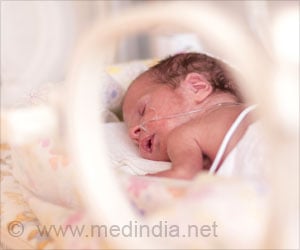Multiple hereditary exostoses (MHE) is an inherited genetic disease that affects children, who suffer from multiple growths on their bones that cause pain and disfigurement.

"There is growing evidence that many autistic people have related genetic defects, or defects that are exacerbated by this one," said Yu Yamaguchi, M.D., Ph.D., professor in the Sanford Children's Health Research Center at Sanford-Burnham." Yamaguchi led this study, along with colleagues Fumitoshi Irie, Ph.D. and Hedieh Badie-Mahdavi, Ph.D.
Measuring social behavior in mice
In humans, MHE is caused by a mutation in one of two genes, Ext1 or Ext2. Together, these genes encode an enzyme necessary to produce heparan sulfate—a long sugar chain that helps bone cells grow and proliferate. In this study, Yamaguchi and his team used mice that lack the Ext1 gene in just a certain type of neuron to understand the mechanism of social problems in MHE patients.
Then the researchers examined the mice's behavior to test for the three defining characteristics of autism: social impairment, language deficits, and repetitive behavior. Using several different techniques, the team found that the mutant mice were less social than normal mice. They also exhibited language deficiencies, as determined using ultrasound vocalization measurements, a well-characterized substitute for mouse language. Lastly, Yamaguchi's team took at look at repetitive behaviors in these mice. Using a board covered with holes, they observed that normal mice will poke their noses in many holes at random, while the mutant mice poke their noses in the same hole again and again.
These behavioral measurements clearly demonstrate what the parents of children with MHE have always suspected—the disease affects more than just bones. The genetic defect that causes skeletal deformities also causes social and cognitive problems.
With these definitive simulations of autistic behavior in humans in hand, the researchers went on to define the cellular, molecular, and physiological basis for these symptoms. They did this first using a technique called c-Fos immuno-histochemistry, which illuminates the parts of the brain that are activated by certain experiences.
"These results are consistent with the amygdala theory of autism," Yamaguchi said, referring to the idea that since the amygdala is thought to control a person's social intelligence, autism could be caused by abnormalities in that part of the brain.
What this means for the general autistic population
Obviously, not all autistic children have MHE, nor are all MHE children autistic. But, according to Yamaguchi, there is evidence that some people who are autistic might have similar defects in heparan sulfate. This is the sugar chain that's defective in MHE, where it causes bone deformities and—as this study now shows—social deficits.
Source-Eurekalert
 MEDINDIA
MEDINDIA




 Email
Email








